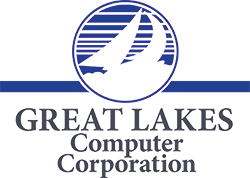This article was written by attorney James W. Slater of the Ohio law firm Slater & Zurz LLP
 Although it seems quite remarkable that a business would not back up computer files in a more sophisticated way than duplicating data to the “C” drive or having an external tape device, some businesses have rather primitive planning disasters that threaten those files and, in some cases, seriously affect the future of the business.
Although it seems quite remarkable that a business would not back up computer files in a more sophisticated way than duplicating data to the “C” drive or having an external tape device, some businesses have rather primitive planning disasters that threaten those files and, in some cases, seriously affect the future of the business.
Earlier this year, a law firm in Charlotte, NC fell victim to Crypto Locker which came in the form of an innocuous-looking e-mail. Once the e-mail was opened, the virus spread to every computer file in the firm. Everything was locked, but accessible by the payment of a $300 credit card fee to an address that could not be traced. The fee was due by a certain deadline and as the North Carolina firm frantically tried to discover the identity of the perpetrator of this virus, the deadline for paying the $300 passed and the files, which were not backed up, could not be retrieved.
Crypto Locker is no longer a threat but new viruses which are just as dangerous are constantly being discovered.
Other law firms have reported their files literally going up in smoke in a building fire, and some have suffered damage due to flooding from hurricanes. How could some of these practitioners have prevented some of the grief they suffered?
DRP and a BCP
Sounds a bit like ingredients for alphabet soup, but the letters stand for Disaster Recovery Plan (DRP) and Business Continuity Plan (BCP).
Disaster Recovery (DR) is the process an organization uses to recover access to its software data and/or hardware to resume normal and critical business functions after a natural disaster or disaster precipitated by humans. When creating a Disaster Recovery Plan (DRP), one needs to remember possible effects on the organization’s manpower due to the disaster as well as loss of equipment and downtime. Thus, the plan should include how to operate without key personnel as well as how to recover data.
DRPs are part of the Business Continuity Plan (BCP) which is an agreed upon arrangement by management and key personnel of what will be done to help the organization recover in the event of a disaster. Detailed plans of how to restore/recover critical operations that may be completely or partially disrupted are formulated. An important part of both DRPs and BCPs is to regularly practice the plans and update them as the business experiences changes such as new personnel, a new branch office, etc.
Some of the many benefits of modernized backup and recovery are:
-
- Protection from financial loss in a catastrophic event
- Improved operational efficiencies and increased staff productivity
- Dramatic improvement in RTO (Recovery Time Objectives) and RPO (Recovery Point Objectives) to ensure business continuity
- Decreased storage expenses
Disaster Preparedness Whitepaper
Most disasters strike when you least expect them. Some – like hurricanes – give you more warning. But in either case, it’s a real problem if disaster brings your business to a grinding halt. Forces of nature, malicious acts, or even a simple mistake can have a long-lasting negative effect on your data security and law firm IT Support practices. Download this whitepaper to learn more about some first steps and follow-up steps you can take to upgrade your disaster preparedness.
Slater & Zurz has been representing clients throughout Ohio with all types of legal issues for over 40 years. The law firm has handled over 30,000 personal injury related cases and helped clients receive more than $150,000,000 in verdicts and settlements. For more information, please visit www.slaterzurz.com
